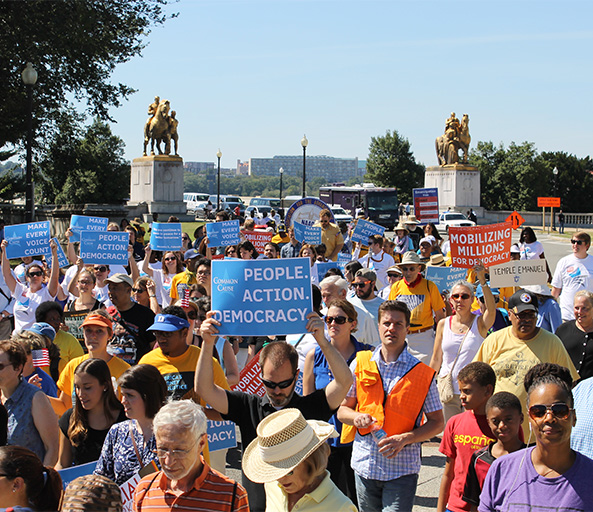New York Campaign
Ranked Choice Voting
Common Cause is fighting for fair elections that truly represent the will of the voters by advocating for ranked choice voting.
Traditional elections in the U.S. can make voters feel like their choices are limited. It might seem like there is a predetermined winner—typically the most well-connected or well-funded. Or, voters may feel like they are choosing the lesser of two evils in order to prevent a worst-case scenario.
Ranked Choice Voting (RCV) can help. With RCV, voters rank candidates from favorite to least favorite. On Election Night, first-choice votes are counted to determine who voters like the best. If a candidate receives a majority of votes, they win. If no candidate receives a majority, the candidate with the fewest first-choice rankings is eliminated. If your favorite candidate is eliminated, your vote is instantly counted toward your next choice. This repeats until one candidate reaches a majority and wins.
Elections should represent voters’ choices fairly and accurately. Ranked Choice Voting amplifies the voice of the people.
What We’re Doing
Your financial support helps us make an impact by holding power accountable and strengthening democracy.
Updates
Blog Post
Ranked Choice Voting passed in New York!
Blog Post
Ranked-Choice Voting: How does it work?
Ranked-choice voting offers a solution.
Blog Post
Ranked-Choice Voting: Majority Rules in Maine’s New Voting System
Press
News Clip
USA Today: Eric Adams sees lead in New York City mayoral election narrow after first ranked choice voting tally
Exit polling from Lerner's group also found that voters took advantage of the new system. More than 80% of voters ranked at least two candidates in the mayoral primary, and more than 40% ranked five candidates.
Lerner also stressed the delay in results is not because of ranked voting but rather state laws protecting voters' rights around when absentee...
News Clip
Fortune: What Is Ranked-Choice Voting? An Exercise in Representative Democracy, Reformists Say

